Southwood Prize
The British Ecological Society awards an annual prize to the best paper by an early career researcher in each of the Society’s journals. Journal of Applied Ecology awards the Southwood Prize in memory of Prof. Sir Richard Southwood. The winner is selected by the Senior Editors of Journal of Applied Ecology at the end of each year and an announcement is made in the New Year following.
The Southwood Early Career Researcher Award is given each year to the best paper in the journal by an author at the start of their career. In the absence of extenuating circumstances, ‘Early Career’ is defined as less than 5 years post- Ph.D. or -D.Phil. experience according to the date of your graduation certificate. The winner of the Southwood Prize Early Career Researcher Award will receive £500, a year’s membership to the British Ecological Society, a year’s subscription to Journal of Applied Ecology, and have their registration fees covered to attend the BES Annual Meeting if they wish to give a presentation on their work.
If the first author of a paper considers that they are eligible for this award they are invited to nominate themselves during the submission process of Manuscript Central.
Read the Virtual Issue bringing together the winning and shortlisted papers for 2023.
Winner of the Southwood Prize 2023
Dominic McAfee
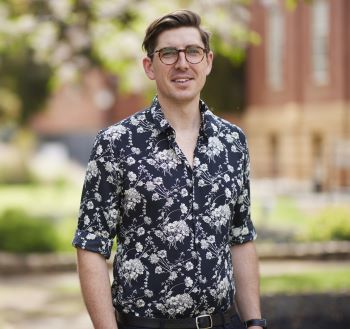
Soundscape enrichment enhances recruitment and habitat building on new oyster reef restorations. Dominic McAfee, Brittany R. Williams, Lachlan McLeod, Andreas Reuter, Zak Wheaton, Sean D. Connell (Journal of Applied Ecology, 2023; 60:1 pp. 111-120).
Over the preceding decade, we’ve seen the rise of a cool new field – soundscape ecology, the study of sounds in nature to understand ecological dynamics across spatial and temporal scales. In this winning research article, the work of Dominic McAfee and colleagues represents an innovative stride in this domain, elucidating the pivotal role of marine soundscapes in the restoration of oyster reefs.
This research highlights the effectiveness of soundscape enrichment through the use of cost-effective marine speakers (built by the lead author!). Oyster recruitment increased by a factor of up to 18 times in sites where speakers played recordings collected from healthy reefs. The authors also observed a 4.3-fold increase in the construction of three-dimensional habitats in sound-enriched sites.
This is a great example of the type of article Journal of Applied Ecology wants to publish. It combines solid ecological science with creative thinking, and has the potential to reshape the way managers design habitat restoration programmes.
About the author
Dominic is currently a marine ecologist at the University of Adelaide in South Australia. His work focusses on the recovery of degraded marine ecosystems, and he has a particular passion for restoring lost oyster reefs. Dominic works on the seafloor, in the lab, and with coastal communities to help ensure marine restoration efforts are both a social and ecological success.
Underwater, his research focuses on solutions to enhance restoration processes, such as playing the natural sounds of the sea to summon oyster larvae to new restoration sites. On land, he is interested in supporting more community-led restoration efforts to connect people in caring for their coastlines.
Winner of the Southwood Prize 2022
Paula Prist

Roads and forest edges facilitate yellow fever virus dispersion. Paula Ribeiro Prist, Leandro Reverberi Tambosi, Luís Filipe Mucci, Adriano Pinter, Renato Pereira de Souza, Renata de Lara Muylaert, Jonathan Roger Rhodes, César Henrique Comin, Luciando da Fontoura Costa, Tatiana Lang D’Agostini, Juliana Telles de Deus, Mônica Pavão, Márcio Port-Carvalho, Leila Del Castillo Saad, Maria Anice Mureb Sallum, Roberta Maria Fernandes Spinola, Jean Paul Metzger (Journal of Applied Ecology, 2022; 59:1, pp. 4 – 17).
Much has been said about the connections between the biodiversity and the human health crises, yet, practical evidence of these connections remains relatively rare. As such, this research by Prist and colleagues represents an important contribution towards advancing our understanding of the processes by which the loss of biodiversity can enhance disease spread.
In this winning research article, Prist et al tried to understand how landscape structure affects yellow fever virus dispersion, and consequently, disease risk. Landscape structure is important for a wide range of ecological processes, including to disease spread, once it can facilitate or impede vector (mosquitoes) dispersion.
Understanding through which elements of the landscape a vector can move, and at what speed, can allow not only for a better landscape planning, but also for better organisation of vaccination campaigns or other preventive measures.
Prist and colleagues found that yellow fever virus disperses on average 1.42 km every day, and uses roads adjacent to forest areas and along forest edges (within a range of 100 m) in interface with agricultural areas, to disperse. Core areas of forest regions were also found to be important barriers for virus movement.
This study shows that, potentially, protected areas and other large forest areas can be an important barrier to the virus, contributing to the provision of disease regulation services and to the maintenance of human health.
About the author
Paula is currently a scientist at EcoHealth Alliance, US. Originally from Brazil, she tries to understand the impacts of land use change on human health. Her current work focuses mainly on finding solutions to prevent epidemics of zoonotic diseases and to enhance the maintenance of human health in tropical areas.
Winner of the Southwood Prize 2021

Chinmay Sonawane
Public health and economic benefits of spotted hyenas Crocuta crocuta in a peri-urban system. Chinmay Sonawane, Gidey Yirga, Neil H. Carter (Journal of Applied Ecology, 2021; 58:12, pp. 2892 – 2902).
Research on interactions between people and wildlife has traditionally concentrated on the negative impacts on human life. To flip this narrative, our research explored a case study of how animals provide tangible benefits to humanity. Aligning conservation and human development goals in such a manner can mediate coexistence between local communities and wildlife.
In their winning paper, Sonawane and colleagues studied why spotted hyena presence has been tolerated in urban areas of East Africa for at least the last 500 years of recorded history. These hyenas often reside on the outskirts of cities and villages during the day, and scavenge through the organic waste discarded by people inside the city during the night.
By observing hyena feeding and recording the hyena population size in Mekelle, Ethiopia, we estimated that these hyenas annually consume 207 tonnes of livestock carcass waste. Furthermore, by integrating this field data into disease transmission models, we found that hyena scavenging in Mekelle prevented 145 anthrax and bovine TB infections in humans and livestock, and saves over USD 50,000 in treatment and livestock loss costs each year.
Due to these substantial sanitation and disease control services, local people tolerate the presence of hyenas in their communities. We also argue that these public health and economic benefits of hyenas contribute to achieving three of the UN’s Sustainable Development Goals: ensuring good health and wellbeing, providing clean water and sanitation, and promoting terrestrial biodiversity.
Valuations of the beneficial contributions from wildlife promote innovative “nature-based solutions” to societal challenges, and bridge conservation and development goals in rural and low-income areas. Studies doing so are rare, and in an increasingly urbanising world, human-wildlife conflict is only expected to increase. Thus, understanding how the ecological functions of wildlife provide tangible benefits to humanity can mediate coexistence between local communities and potentially problematic species.
About the author
Chinmay is currently a first-year PhD student and a Knight-Hennessy Scholar at Stanford University. the ecology and evolution of animal behaviour: how do ecological interactions shape behavioural adaptations, and how do these behavioural adaptations consequently affect ecosystems, including human communities?
This paper tackles the second question on how the scavenging behaviour of spotted hyenas benefits humanity and based on Chinmay’s undergraduate thesis, which was guided by Prof. Neil Carter (University of Michigan) and Prof. David Haig (Harvard University).
Winner of the Southwood Prize 2020

Pu Jia
Plant diversity enhances the reclamation of degraded lands by stimulating plant-soil feedbacks. Pu Jia, Jie-liang Liang, Sheng-xiang Yang, Sheng-chang Zhang, Jun Liu, Zhi-wei Liang, Feng-mei Li, Qing-wei Zeng, Zhou Fang, Bin Liao, Wen-sheng Shu, Marc W. Cadotte, Jin-tian Li (Journal of Applied Ecology, 2020; 57:7, pp. 1258 – 1270).
While the ecological literature on the linkages between biodiversity and ecosystem function is rich, the application of this field of research to reclaiming contaminated lands has been strangely depauperate.
There is little guidance on whether we should be planting diverse plant assemblages on contaminated lands, or if we ought to simply plant the most productive species or those that provide efficient phyto-removal of contaminants. This issue is of fundamental importance to places like China – and with China’s commitment to improving its environmental health, biodiversity research has the ability to impact policy and management at a national scale.
To answer this question, Jia and colleagues performed a land reclamation experiment on a heavily degraded mine wasteland in China, and assessed land reclamation efficiency by examining several criteria of ecosystem function.
Their results show how diverse plant assemblages are better able to spur plant-soil feedbacks, and that increasing plant diversity is an effective strategy to enhance land reclamation after contamination. The findings demonstrate that the key for reclamation is to build high-diversity plant assemblages to ensure that soil processes, like decomposition and nutrient cycling, can support a self-sustaining ecosystem.
About the author
Currently a postdoctoral research fellow at Institute of Ecological Science, South China Normal University, China, Pu previously spent 3 years at Sun Yat-sen University, China and 1 year at University of Toronto Scarborough, Canada, completing a PhD in 2018. Their PhD investigated the strength of the above-ground-below-ground interactions, which formed the basis for the winning paper.
Pu continues to work on forest ecosystems, agro-ecosystems and heavily degraded mined land across mainland China and, as a continuation of the paper in Journal of Applied Ecology, is currently conducting similar field trials and research in three demonstration sites of metalliferous mine wastelands in southeast China.
Winner of the Southwood Prize 2019

Ségolène Humann‐Guilleminot
A nation‐wide survey of neonicotinoid insecticides in agricultural land with implications for agri‐environment schemes,
Ségolène Humann‐Guilleminot, Łukasz J. Binkowski, Lukas Jenni, Gabriele Hilke, Gaétan Glauser, Fabrice Helfenstein (Journal of Applied Ecology, 2019; 56:7, pp. 1502– 1514).
From ten years of being marketed in the mid-1990s, neonicotinoid insecticides became the most used insecticides worldwide. They were soon identified as a potential cause for the massive decline of domestic bee populations and invertebrates in general.
Two years after a ban on a subset of neonicotinoid insecticides in Europe and Switzerland, Ségolène and colleagues conducted a study to assess the extent to which neonicotinoid insecticides were still present in Swiss agro-ecosystems and their potential detrimental effects on non-target invertebrates.
Based on 700 samples of soil and vegetation, collected in more than 60 farms, they found that neonicotinoid insecticides were ubiquitous in the Swiss agricultural landscape. Soil, crop and wild vegetation samples of all conventional and integrated-production farms contained at least one neonicotinoid insecticide. More than 90% of soil, crop and wild vegetation samples of organic farms also contained at least one neonicotinoid insecticides. Combinations of two or more neonicotinoid insecticides were also detected in a majority of samples. The team estimated that such neonicotinoid residues may have significant negative impacts on non-target invertebrates with little benefits in terms of crop protection against pest species.
On the basis of their results, Ségolène and coauthorscall for a reduction in the dispersion and overuse of neonicotinoid insecticides worldwide in order to prevent any detrimental effects on biodiversity and ecosystem services associated with agroecosystems.
The journal’s Executive Editor describes the work as a worthy winner in a very competitive field. It is a rigorous study, as the authors examined 169 fields from across lowland Switzerland, and their laboratory analysis identified five different neonicotinoid pesticides in both the soils and crops. It is also a very significant study for policy. Not only does it show that many above-ground invertebrates are likely to suffer lethal or sub-lethal concentrations of insecticides following conventional practices, it also suggests these insecticides may be jeopardising populations of beneficial invertebrates in organic farms and ecological focus areas. Studies like this are crucial in guiding national and international farming policies, and could allow natural predator populations to play a more important role in the control of damaging pest species. In particular, Humann‐Guilleminot et al. provides robust evidence supporting the continued implementation of the EU ban on most neonicotinoid pesticides.
About the author
Ségolène was born in 1990, in Bordeaux, France, where she earned a Bachelor’s degree in organismal biology and ecology in 2012. She then went on a one-year sabbatical to Canada, where she worked as a volunteer in wild fauna rehabilitation centres before joining University of Neuchâtel, Switzerland’s laboratory of evolutionary ecophysiology in 2013 to run a three-year Master’s project.,. Ségolène was awarded a Master’s degree with honours in 2016 and is currently working on a PhD in the restoration of alpine grasslands at the University of Bern, Switzerland.
Winner of the Southwood Prize 2018
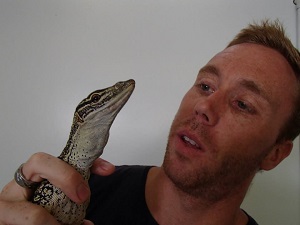
Simon Clulow
Elevated salinity blocks pathogen transmission and improves host survival from the global amphibian chytrid pandemic: Implications for translocations,
Simon Clulow, John Gould, Hugh James, Michelle Stockwell, John Clulow, Michael Mahony (Journal of Applied Ecology, 55:2 pp 830-840)
Clulow et al.’s paper shows that manipulating environmental salinity in landscapes where amphibians are translocated can mitigate the impacts of the amphibian chytrid disease by lowering infection rates and thus improve the probability of population persistence for amphibians currently affected by chytridiomycosis. More broadly, Simon and his co-authors provide support for the paradigm that environmental manipulation can be used to mitigate the impact of emerging infectious diseases.
The journal’s Senior Editors describe the work as a clear and striking study that gives hope for tackling one of the most pernicious of contemporary threats to biodiversity: that of chytridiomycosis. The paper demonstrates, for the first time, that the probable primary mechanism of a previously demonstrated beneficial effect of salinity on survival of green and golden bell frog is reduced disease transmission, and not increased survival of infected frogs. The paper thus combines clear new contributions to scientific knowledge and impactful management recommendations, making it a worthy winner of the Southwood Prize. It is well-written for a broad audience while also being immensely topical. The findings are important and could have widespread practical applications.
About the author
Simon Clulow is a Research Fellow at Macquarie University, Sydney. He received his PhD from the University of Newcastle for studies investigating ways in which environmental stressors can be used to mitigate the impacts of emerging wildlife diseases via the environmental mismatch paradigm between host and pathogen, which formed the basis for his Southwood Prize winning paper. His current research spans the fields of ecology, disease, behaviour and reproduction, primarily on frogs and reptiles and he often integrates these under an applied conservation umbrella. He has conducted extensive work on the threats posed to the biota and ecosystems of northern Australia (especially guilds of the apex varanid predators) from the expanding distribution of the invasive toad, Rhinella marina and on the impacts of the amphibian chytrid disease throughout Australia and New Guinea. He is particularly interested in developing novel, modern approaches to mitigating impacts of seemingly unstoppable threatening processes (e.g. emerging diseases, invasive species) including through environmental mitigation, genome storage, assisted reproduction and de-extinction. He is passionate about conserving not only genetics and biodiversity, but also a belief that, for conservation to be most effective, it is important to understand and conserve ecological and evolutionary processes, such as behaviour, which are often neglected. Due to his passion for amphibians in particular, he recently completed a comprehensive field guide to the frogs of Australia of which he himself descried a new species from the genus Uperoleia.
Winner of the Southwood Prize 2017

Dominik M. Behr
Combining human acceptance and habitat suitability in a unified socio‐ecological suitability model: a case study of the wolf in Switzerland, Dominik M. Behr, Arpat Ozgul and Gabriele Cozzi (Journal of Applied Ecology, 54:6 pp 1919-1929)
It’s an unfortunate reality that conservation actions are often most needed in locations where they are least wanted. This unhappy correlation can seriously undermine conservation outcomes, making management actions more expensive and less likely to succeed. Nowhere is this more apparent than where conservation scientists reintroduce apex predators into ecosystems. Although some humans who live among predatory wildlife view them with reverence and worship, others treat them with a mixture of fear and antipathy. Apex predator reintroductions have consequently sparked some of the most long-running and vitriolic conflicts in environmental management. The reintroduction of grey wolves within the United States, for instance, has led to lawsuits, illegal poaching and decades of bad blood between conservationists and ranchers.
Behr et al.’s article, chosen for the 2017 Southwood Prize, maps a careful path through this difficult socio-ecological challenge. The paper, ‘Combining human acceptance and habitat suitability in a unified socio‐ecological suitability model …’, is based around a case-study of wolf reintroduction in Switzerland. The authors use spatial statistical modelling to create both social and ecological suitability maps for wolves in Switzerland, searching for locations that both satisfy the habitat requirements of the species and which contain human communities that are more likely to accept the presence of wolves in their landscape. The editors liked the rigorous, integrative approach used in this study, combining sociological and ecological data to better understand the observed pattern of wolf recolonisation in Switzerland, and to make recommendations for future management. The paper highlights significant obstacles to large predator recolonisation but also shows how interventions might be targeted to produce cost-effective reductions in human-wildlife conflict.
About the author
Dominik is studying a PhD in Ecology at University of Zurich in collaboration with the Botswana Predator Conservation Trust. His current research focuses on dispersal and its demographic consequences in the endangered African wild dog. Specifically, he aims to acquire movement data of dispersing individuals, which will be merged with existing data on resident groups in a demographic model to assess population viability. His background lies in engineering, having received a MSc from the Swiss Federal Institute of Technology. Having worked in the private sector for a few years, he decided to return to academia but this time with a different focus. He studied environmental sciences at University of Zurich where he obtained a second MSc. It was during the course of his masters that he conducted the above-mentioned study (Behr, Ozgul and Cozzi 2017), integrating human acceptance and ecological components in a unified framework to better assess suitable wolf habitats in Switzerland. Dominik’s general research interests cover population ecology, movement ecology, biodiversity conservation, and human-wildlife conflict.
The highly commended papers for 2017 are:
Every restoration is unique: testing year effects and site effects as drivers of initial restoration trajectories
Katharine L. Stuble, Stephen E. Fick, Truman P. Young
Fire prevents woody encroachment only at higher-than-historical frequencies in a South African savanna
Madelon F. Case, A. Carla Staver
Winner of the Southwood Prize 2016

Michael Becker
Sixty-year legacy of human impacts on a high Arctic ecosystem Michael S. Becker, Wayne H. Pollard (Journal of Applied Ecology, 53:3 pp 876–884)
Despite the warnings of conservation scientists, there is a widely-held and persistent belief that ecosystems are fairly resilient to human disturbance and that they will eventually ‘bounce back’. In their study, Becker and Pollard assessed a region of the Canadian high Arctic that had been disturbed in the 1940s by the construction of a small airstrip. After 5 years of use, the airstrip had been abandoned; consequently, it has had over 60 years to ‘bounce back’ to its original state. Using a carefully-designed, stratified random sampling approach, Becker and Pollard surveyed the vegetation, soil and abiotic characteristics of the former airstrip and neighbouring, undisturbed patches of terrain. They found that, far from bouncing back, the disturbed landscape reflects a disturbance-initiated succession towards a different stable-state community. The study is an excellent example of how carefully-conducted work can expose the long-term effects of human land uses, and also leads to clear management recommendations. In particular, Becker and Pollard were able to advise about how managers can lessen their impact on high Arctic environments, by being sensitive to the micro-topography of disturbed areas and by reseeding those areas with native species. The Editors were impressed with the thorough and careful study design, and with the clarity of the implications for applied ecology. We congratulate Michael on an excellent piece of work by an early career author and wish him every success in his future career.
About the author
Michael works at the BBC Natural History Unit, developing the Antarctic episode of a landmark wildlife documentary following up the recent Planet Earth II. He is also a visiting researcher at the Center for Macroecology, Evolution, and Climate at the University of Copenhagen. Michael earned his Bachelor of Science degree in Biology at McGill University and spent the next three years working in Antarctic, Arctic and other research programs. For his PhD at McGill University, his work focused on the intersection of geomorphology and ecology in the cold, periglacial environments of the high Arctic. Specifically, he examined how coupled feedbacks between permafrost and plant life adapt and change with a warming world. He is passionate about public outreach and journalism on climate change, landscape impacts, and environmentalism.
Winner of the Southwood Prize 2015
Dustin Ranglack

The 2015 Southwood Prize has been awarded by the Editors to Dustin Ranglack for his paper Competition on the range: science vs. perception in a bison–cattle conflict in the western USA co-authored with Susan Durham and Johan T. du Toit (Journal of Applied Ecology, 52:2, pp 467–474)
The paper by Dustin Ranglack and co-authors provides an excellent example of the type of work Journal of Applied Ecology aims to publish and the Senior Editorial team was unanimous in its decision to award the Southwood Prize to Dustin. This interdisciplinary study tackles a clear management issue using adequately designed experimental approaches, contributing to improving our understanding of human–wildlife conflicts in rangelands. Importantly, this case study illustrates the need for science-based management of social–ecological systems in which even long-term resource users might underestimate the complexities of trophic interactions. This paper represents a substantial amount of work and is likely to be very well received by the community. The Editors would like to congratulate Dustin on an excellent piece of work by an early career author and wish him every success in his future career.
About the author
Dustin earned his Bachelor of Science degree in Wildlife Science from Utah State University in 2008. He then spent several years working as a research technician in Montana and Colorado before returning to Utah State University for his PhD studies in Ecology, focusing on American bison ecology and bison–cattle interactions in the Henry Mountains of southern Utah, which he completed in 2014. He has since worked as a post-doctoral researcher at Montana State University using spatial ecology to evaluate and inform elk and elk habitat management in western Montana. His research focuses on applied large mammal ecology and conservation, spatial ecology and human–wildlife conflict.
Winner of the Southwood Prize 2014
Katharina Gerstner

The 2014 Southwood Prize has been awarded by the Editors to Katharina Gerstner for her paper Effects of land use on plant diversity – A global meta-analysis co-authored with Carsten Dormann, Anke Stein, Ameur Manceur and Ralf Seppelt (Journal of Applied Ecology, 51: 1690–1700).
The paper from Katharina Gerstner and colleagues provides a comprehensive analysis that helps to resolve the debate surrounding human land use and its effects on biodiversity. It has been proven that human land use is a major contributor to the global biodiversity crisis, but this does not seem to be repeated at smaller scales. Much of the current disagreement regarding the impacts of human land use on biodiversity may be due to variability according to region, scale of analysis, and the specific land use being examined. This paper overcomes this issue by directly testing the effects of these factors using a meta-analytic framework and a global dataset extracted from 375 studies. The careful analyses of the contexts in which land use impacts on biodiversity provides a useful template for the study of important emerging questions.
This paper represents a substantial amount of work on a key topic that is likely to be very well cited. The impacts of land-use change on biodiversity are known to be scale-dependent and vary according to a wide range of factors. This paper provides an overview that reports the negative impacts of changes in land use for plants, but crucially highlights the context-dependent sensitivities that point the way for further work in a clear manner. The Editors would like to congratulate Katharina on an excellent piece of work by an early career author and wish Katharina every success in her future career.
About the author
Katharina is currently finalising her PhD studies at the Helmholtz-Centre of Environmental Research (UFZ) in Leipzig. Her research focuses on investigating the effects of land use on global biodiversity patterns of vascular plants. She uses the countryside model to study species-area relationships and at the global level she finds research syntheses such as meta-analyses particularly helpful. Her background is in mathematics, having received a diploma in Mathematics at University of Jena, Germany and she is broadly interested in the application of sophisticated statistical methods for ecological problem-solving.
Winner of the Southwood Prize 2013
Kulbhushansingh Suryawanshi
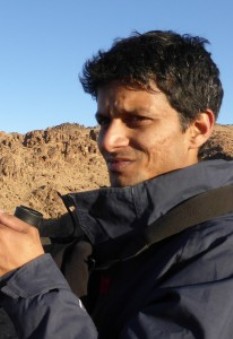
The 2013 Southwood Prize has been awarded by the Editors to Kulbhushansingh Suryawanshi for his paper People, predators and perceptions: patterns of livestock depredation by snow leopards and wolves published with Yash Veer Bhatnagar, Stephen Redpath and Charudutt Mishra (Journal of Applied Ecology, Volume 50, issue 3, pp. 550-560).
Kulbhushansingh Suryawanshi’s paper combines robust social science with cutting edge ecological research to generate novel insights with direct lessons for management of human-wildlife interactions. Papers that contain each of these four components areas are still very rare and are exactly the type of research that the Journal of Applied Ecology aims to promote. The paper compared people’s perceptions of the risk factors for predation by snow leopards and wolves on their livestock with data on actual predation incidents. The research also involved the authors in substantial ecological fieldwork to estimate wild prey numbers. Fascinatingly, the correlates of people’s perceptions of risk were not the same as those of actual predation mortality. The paper’s findings call into question the suggestion that snow leopard killing of livestock would reduce if wild prey numbers were increased, and suggest that work is needed better to align perceived and actual risk and to engage better with people about how best to address carnivore depredation of their livestock. There is a lot of literature on human-wildlife conflict, but the careful and thorough interdisciplinary approach taken to the issue by Dr Suryawanshi and his colleagues is still far too rare. The Editors congratulate him on his excellent paper.
About the author
Kulbhushan is currently working as a Regional Ecologist with the Snow Leopard Trust, Seattle, US and as a Research Scholar with the Nature Conservation Foundation (NCF), Mysore, India. For his PhD with the NCF, he worked on the impact of wild-prey availability on the population and diet of the snow leopard (Panthera uncia) with implications for livestock predation by this endangered carnivore. He is interested in the application of science-based problem solving to conservation conflicts. He is also interested in the applications of Population and Behavioural Ecology to species conservation.
Winner of the Southwood Prize 2012
Andrew Olds
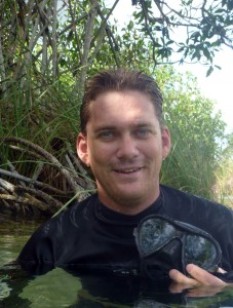
The 2012 Southwood Prize winner is Andrew Olds for his paper Synergistic effects of reserves and connectivity on ecological resilience published with Kylie A. Pitt, Paul S. Maxwell and Rod M. Connolly (Journal of Applied Ecology, Volume 49 issue 6, pp. 1195-1203)
Understanding the effect of reserve connectivity on mobile organisms and how this influences ecosystem function is vital for effective reserve management. The editors were impressed by this well-conducted experimental study by Olds et al.which addressed a highly important question in applied ecology. The study was able to produce specific management recommendations for improving ecosystem resilience. Olds et al. linked processes at both the landscape and local scales, taking an ecosystem approach to habitat management.
About the author
Andrew is a Research Fellow in the Coast and Estuaries section of the Australian Rivers Institute and School of Environment at Griffith University in Queensland. In his PhD at Griffith University (2013), he examined the effects of connectivity on marine reserve performance across the western Pacific Ocean. Andrew worked previously as an environmental consultant and a conservation practitioner. His research focuses on marine community ecology, seascape ecology, conservation planning and the impacts of global change on marine ecosystems. Current projects continue to examine the effects of marine reserves on ecological processes, ecosystem services and socio-ecological resilience in tropical Australian and Pacific seascapes.
Winner of the Southwood Prize 2011
Nicholas Beeton

The 2011 Southwood Prize has been awarded by the editors to Nicholas Beeton for his paper with Hamish McCallum Models predict that culling is not a feasible strategy to prevent extinction of Tasmanian devils from facial tumour disease (Journal of Applied Ecology, Volume 48 issue 6, pp.1315-1323).
The Tasmanian devil Sarcophilus harrisii is currently threatened by the infectious cancer Devil Facial Tumour Disease (or DFTD). The disease has affected the devil population to the point where the species is now endangered. Beeton and McCallum use a suite of mathematical models to investigate the effectiveness of culling of infected devils as a tool to control DFTD. Though they found that more regular removal was more likely to be effective, their main conclusion was that the removal rate necessary to successfully eliminate disease may be too high to be achievable. This research demonstrates the importance of modelling in gauging the appropriateness of management actions, and suggests that culling is only appropriate for controlling wildlife diseases in a limited set of conditions.
About the author
Nicholas is currently finalising his Ph.D. in Zoology at the University of Tasmania, studying the Tasmanian devil and DFTD from a modelling perspective. This includes the above study (Beeton and McCallum 2011), predicting spatial patterns of abundance, modelling the spatial spread of the disease, and estimating model parameters using novel techniques. His background is in Applied Mathematics, having received his BSc (Hons) in Advanced Mathematics from the University of Sydney with a thesis studying nonlinear dynamics in biomedical ultrasound. He has a broad interest in applied problem-solving, having also completed various mathematics- and physics-based research projects as an undergraduate, including studying photonic crystals in a butterfly wing, modelling magnetic fields in the solar corona, and helping to design terahertz-frequency detectors.
Nicholas is a worthy recipient of the Southwood Prize for 2011 and we wish him every success in his future career.
Winner of the Southwood Prize 2010
Stephanie O’Donnell
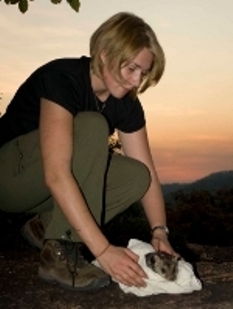
For the 2010 publication year, the editors are pleased to award this prize to Stephanie O’Donnell for her co-paper with Jonathan Webb and Richard Shine ‘Conditioned taste aversion enhances the survival of an endangered predator imperilled by a toxic invader’ (Journal of Applied Ecology, Volume 47, pp.558-565).
The post-colonization history of Australia has been one of repeated extinctions due, in large part, to the fact that imported non-indigenous species seem to have a disproportionately large impact on the native biota. Currently, cane toads Bufo marinus are spreading rapidly across Australia and, due to their toxicity, have been the cause of a multitude of population declines in predators. O’Donnell and co-authors use conditioned taste aversion (CTA) as a tool to make predators wary of cane toads. In a clever experiment, the researchers laced dead toads with a nausea-inducing chemical and fed them to a subset of male northern quolls Dasyurus hallucatus -a predator rapidly declining in the presence of the toads. Upon release, toad-averse quolls had much higher survival than toad-naive ones. This research shows that in situations where stopping an invasion is impossible, management activities can focus instead on altering the behaviour of native animals, thus reducing the immediate risk of extinction.
During her two years in the Shine lab, Stephanie was based in northern Australia where she worked closely with a captive breeding programme for the endangered northern quoll. Her work with captive-bred animals was focused on refining the CTA technique for training quolls to avoid toads as prey, with the ultimate aim of producing a bait for training wild populations of quolls. Stephanie was also involved with the longer-term monitoring of released ‘toad smart’ quolls into areas of Kakadu National Park. This work has produced some exciting results. Most encouragingly, some toad-trained female quolls have survived for 12 months in the field, and have successfully raised litters of young. This ongoing collaborative project involves a team from the University of Sydney, the Territory Wildlife Park, and Kakadu National Park, and is funded by the Australian Research Council.
After completing her honours and research assistant role with the Shine lab., Stephanie joined an environmental consultancy specialising in the forest carbon sector. She works on projects to prevent the logging of native forests, thereby avoiding significant carbon emissions from deforestation. These projects also yield immense benefits for conserving biodiversity, maintaining ecosystem services and both generating and diversifying income for local communities that traditionally depend on timber harvests. Stephanie is particularly responsible for carbon modelling and vegetation stratification, although she has the opportunity to contribute to each stage of a project’s development. She is thoroughly enjoying working in such a dynamic and cutting-edge field, particularly the fact that the environmental benefits of these projects are immediately evident.
Winner of the Southwood Prize 2009
Christian Kerbiriou

The 2009 Southwood Prize is awarded to Christian Keribiriou for his co-paper ‘Tourism in protected areas can threaten wild populations: from individual response to population viability of the chough Pyrrhocorax pyrrhocorax‘ (Journal of Applied Ecology, Volume 46, pp. 657-665).
The paper combines careful observation with stochastic modelling to demonstrate that relatively minor disturbance from tourism has dramatic effects on population viability, even when breeding individuals are not directly affected. In addition to its important contribution to protected area management, the paper demonstrates that the full impact of tourism may be overlooked, with direct consequences for the assessment of sustainable levels of human disturbance in national parks, nature reserves and other protected areas. Few studies have quantified the link between ultimate factors of species decline, stochastic processes and extinction risk for a given population or species. By demonstrating how tourism pressure is related both to individual response and population dynamics in an endangered species, this study takes a significant step forward.
Christian Keribiriou worked as a conservation practitioner in the National Regional Park of Amorique in France where he was involved in monitoring and survey work, and raising public awareness of environmental issues. During this time, he completed his PhD with the Museum of Paris on the population viability of chough on the protected island of Ouessant off the west coast of Brittany, France. He went on to do postdoctoral research working on the development of a national biodiversity monitoring scheme, focusing particularly on bat monitoring. In June 2009, he moved to a permanent position as a Lecturer at Paris University where he teaches ecology and statistics. His research continues to focus on population viability analyses through interdisciplinary approaches. Christian is a worthy recipient of the Southwood Prize for 2009 and we wish him every success in his academic career.
Winner of the Southwood Prize 2008
Tiziana Lembo and Katie Hampson
The 2008 Southwood Prize is awarded jointly to Tiziana Lembo and Katie Hampson for their paper ‘Exploring reservoir dynamics: a case study of rabies in the Serengeti Ecosystem’ ( Journal of Applied Ecology, Volume 45, pp. 1246–1257). The paper combines long-term data and modelling to demonstrate that the reservoir for rabies in the Serengeti is a multi-host community where domestic dogs are the only population necessary for persistence but wild carnivores contribute as non-maintenance populations. In addition to making a significant contribution to understanding the dynamics of multi-host diseases, the work has also had a major impact on management policy, suggesting that control strategies that target domestic dogs should have the greatest impact on reducing risk of infection to humans, livestock and wildlife. The paper is exemplary in combining academic rigour with management relevance and the authors are worthy joint recipients of the 2008 Southwood Prize.
Tiziana Lembo’s PhD, based at the University of Edinburgh, focussed on the identification of reservoirs for rabies and canine distemper virus in the Serengeti. The study posed several major challenges relating to the complex and elusive problem of reservoir identification for pathogens infecting multiple host species, which Tiziana successfully addressed using a suite of phylogenetic and epidemiological approaches. Tiziana followed her PhD with a BBSRC fellowship on bovine tuberculosis in Tanzania, and currently holds a joint position as a post-doctoral fellow at Lincoln Park Zoo (USA) and the University of Glasgow.
Katie Hampson’s PhD from Princeton University focussed on understanding the transmission dynamics of rabies in the Serengeti. During this study, she pioneered the use of contact-tracing methodology and applied a range of quantitative methods for elucidating the epidemiology of rabies, generating invaluable information on the infection parameters and transmission patterns of rabies in domestic animals, human, and wildlife hosts. Katie has developed these approaches further as part of her post-doctoral fellowship from the Wellcome Trust which is currently held at the University of Sheffield.
The Journal of Applied Ecology published a number of excellent papers by young authors during 2008 and we should also like to mention the contribution from Lian Pin Koh entitled ‘Can oil palm plantations be made more hospitable for forest butterflies and birds?’ (Journal of Applied Ecology, Vol. 45, pp. 1002–1009). The Editors thought this was a very important and timely contribution from a young author and offer their congratulations for a well-executed piece of work.
Winner of the Southwood Prize 2007
Jonathan N. Pauli
The 2007 Southwood Prize is awarded to Jonathan N. Pauli for his co-paper with Steven W. Buskirk ‘Risk-disturbance overrides density dependence in a hunted colonial rodent, the black-tailed prairie dog Cynomys ludovicianus‘ (Journal of Applied Ecology, Volume 44, pp. 1219-1230).
This paper is exemplary in its use of a carefully designed empirical study to address an important issue in applied ecology, within a very clear theoretical framework. In the review process it was identified as extremely well written, with clear management relevance and as making a strong contribution to general theory about the effects of hunting disturbance on colonial species. The study results were very interesting, demonstrating the importance of indirect effects of hunting on vital rates, and showing that these effects (principally reduced fecundity in succeeding years) swamped any potential positive compensatory effect of hunting on population growth rate. Jonathan Pauli is a very worthy recipient of the Southwood prize for 2007, and we congratulate him on this excellent piece of work.
Jonathan is currently a Ph.D. candidate in Ecology at the University of Wyoming. For his dissertation research, he is investigating the population dynamics, structure, and dispersal capabilities of American martens on islands off northwestern North America. He received his MSc in Zoology and Physiology from the University of Wyoming, where he studied the effects of plague and recreational shooting on black-tailed prairie dog biology. He received his BSc at the University of Wisconsin-Stevens Point.
In 2007, the Journal of Applied Ecology published a number of papers by young authors and we should also like to mention the contribution by Robert Schick with Steven Lindley for ‘Directed connectivity among fish populations in a riverine network’ (Volume 44, pp. 1116-1126). The editors felt this was an important paper by a young author and offer their congratulations on a well-executed piece of
research.
Like what we stand for?
Support our mission and help develop the next generation of ecologists by donating to the British Ecological Society.